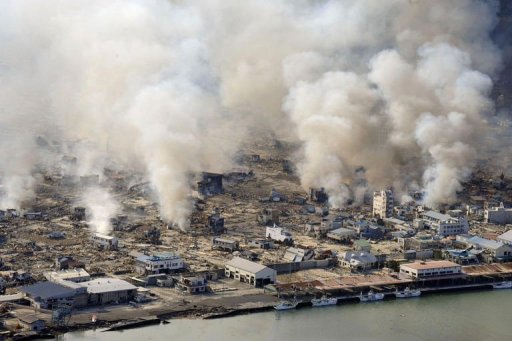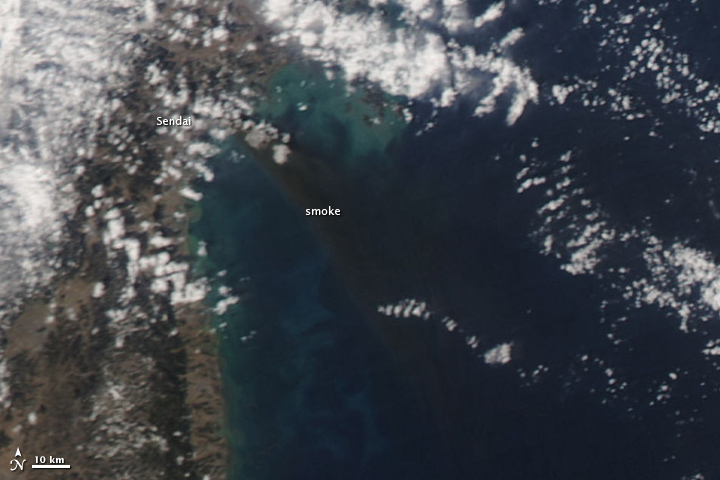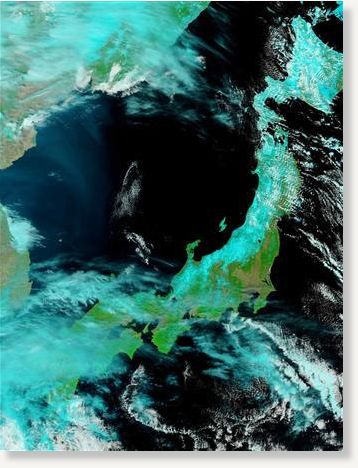
© Agence France-PresseWhite smokes rises into the air in the badly damaged town of Yamada.
Washington - Japan's recent massive earthquake, one of the largest ever recorded, appears to have moved the island by about eight feet (2.4 meters), the US Geological Survey said.
"That's a reasonable number," USGS seismologist Paul Earle told AFP. "Eight feet, that's certainly going to be in the ballpark."
Friday's 8.9 magnitude quake unleashed a terrifying tsunami that engulfed towns and cities on Japan's northeastern coast, destroying everything in its path in what Prime Minister Naoto Kan said was an "unprecedented national disaster."
The quake and its tectonic shift resulted from "thrust faulting" along the boundary of the Pacific and North America plates, according to the USGS.
The Pacific plate pushes under a far western wedge of the North America plate at the rate of about 3.3 inches (83 millimeters) per year, but a colossal earthquake can provide enough of a jolt to dramatically move the plates, with catastrophic consequences.
"With an earthquake this large, you can get these huge ground shifts," Earle said. "On the actual fault you can get 20 meters (65 feet) of relative movement, on the two sides of the fault."

